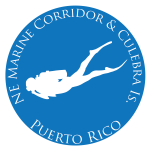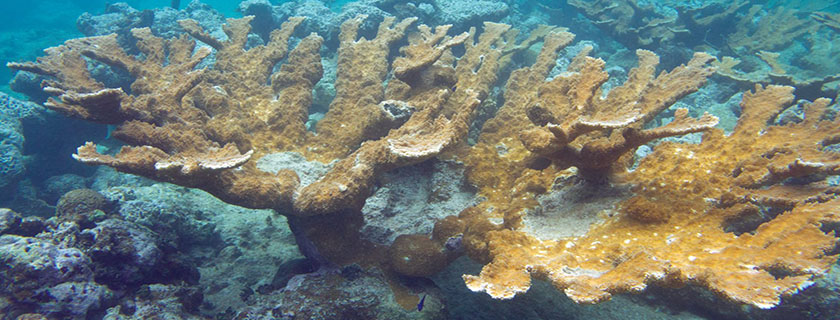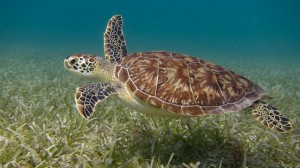NE Marine Corridor & Culebra Island, Puerto Rico
 Puerto Rico’s Northeast Marine Corridor and Culebra Island Habitat Focus Area comprises a wide array of ecosystems in a relatively small geographic area of urban and protected lands. There are habitats ranging from coastal forests, wetlands, and perennially bioluminescent lagoons to seagrass beds, coral reefs, and miles of pristine beach.
Puerto Rico’s Northeast Marine Corridor and Culebra Island Habitat Focus Area comprises a wide array of ecosystems in a relatively small geographic area of urban and protected lands. There are habitats ranging from coastal forests, wetlands, and perennially bioluminescent lagoons to seagrass beds, coral reefs, and miles of pristine beach.
Many species of coral, including those protected under the Endangered Species Act, fringe the island and provide habitat to recreationally and commercially important fish such as grouper. This area is also of great economic value thanks to a thriving tourism industry.
Threats
Puerto Rico’s Northeast Marine Corridor and Culebra Island has experienced significant declines in the quality and extent of its mangroves, coral reefs, seagrass beds and their dependent species. This is mainly due to unsustainable coastal development, over-zealous recreation, land-based sources of pollution, excessive and illegal fishing, and the effects of climate change such as rising sea surface temperatures. In September of 2017, Puerto Rico, Culebra, and Vieques Islands were devastated by Hurricane Maria. NOAA is working with local partners to identify next steps for the NE Marine Corridor and Culebra Island Habitat Focus Area as the islands recover from this natural disaster.
Objectives
- Habitat Resilience – Improved management to support resilience of coral reefs, seagrass beds, and coastal habitat.
- Coral Recovery – Increased population size, abundance, and health of endangered coral species.
- Fisheries Management – Sustainable management of living marine resources.
- Sustainable Recreation – Promotion of recreational practices that preserve ecological integrity of marine habitats.
Details about the objectives and specific actions NOAA is implementing can be found in the Habitat Focus Area Implementation Plan.
Collaboration
Our primary collaboration is with the Puerto Rican government, especially Puerto Rico’s Department of Natural and Environmental Resources. Other partners include numerous local and national non-governmental organizations, federal agencies like the U.S. Environmental Protection Agency and U.S. Fish and Wildlife Service, and the Caribbean Fisheries Management Council. Additionally, we partner with universities and private entities to strengthen our efforts.
Ongoing Activities
Current activities to advance habitat science and conservation include:
- Implementing watershed restoration projects to reduce threats from land-based sources of pollution.
- Recovering threatened staghorn and elkhorn coral populations.
- Reducing recreational impacts to coral reefs and associated habitats.
- Installing navigation aids to reduce small vessel navigation impacts to habitats.
- Developing population enhancement methods for certain endangered or threatened corals.
- Conducting emergency coral reef restoration in the aftermath of physical impacts from storms and vessel groundings.
Priority management-driven science actions include:
- Modeling connectivity to target land-based sources of pollution reduction efforts.
- Protecting commercially important fish stocks through the identification of grouper spawning aggregations and critical nursery habitat.
- Improving climate and weather modeling to provide real-time storm surge recommendations.
- Developing and implementing reef resilience surveys to inform management decision-making.


